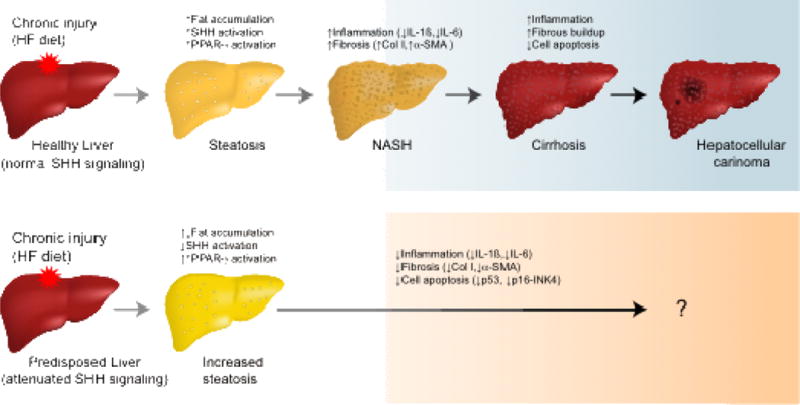Figure 7.

Proposed mechanism of NAFLD progression in the context of SHH signaling and exposure to Western-style diets. In a normal liver (top panel), prolonged exposure to high-fat (HF) diet results in fatty liver with a concurrent activation of SHH and PPARγ pathways. The liver becomes chronically inflamed and the SHH ligand produced by ballooned hepatocytes activates quiescent hepatic stellate cells to differentiate into myofibroblasts with increased production of pro-fibrogenic markers (e.g., collagen type I and α-SMA) and pro-inflammatory cytokines (e.g., IL1β, IL6). About 20% of patients with NASH eventually develop cirrhosis, which prevents the liver from functioning properly. They may also develop hepatocellular carcinoma. In the presence of HF diet and attenuated SHH signaling (bottom panel), there is increased susceptibility to fat accumulation but decreased deposition of fibrous tissue and inflammation due to overactivation of PPARγ, which reduces the risk of cirrhosis. The course of NAFLD in this scenario remains to be elucidated.
